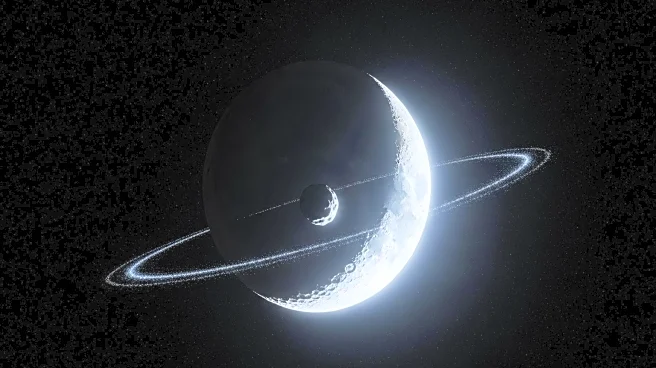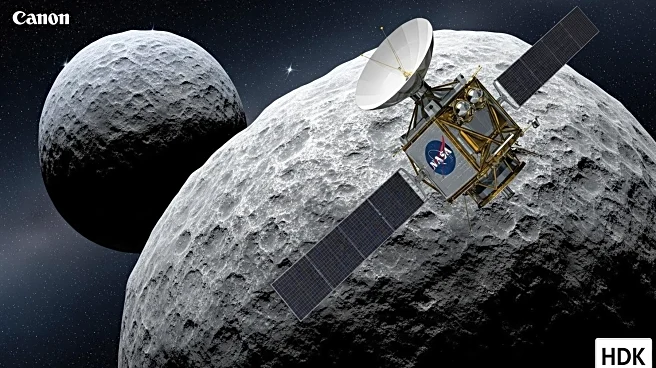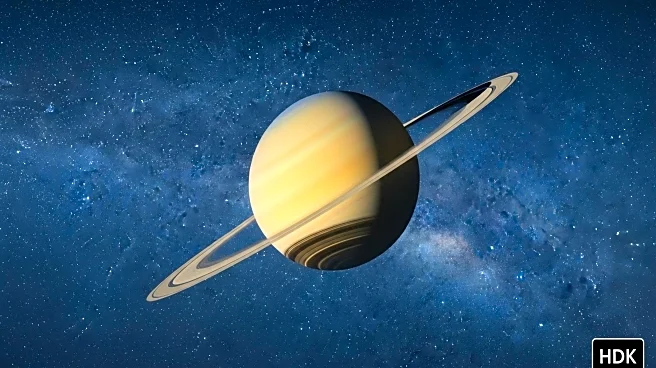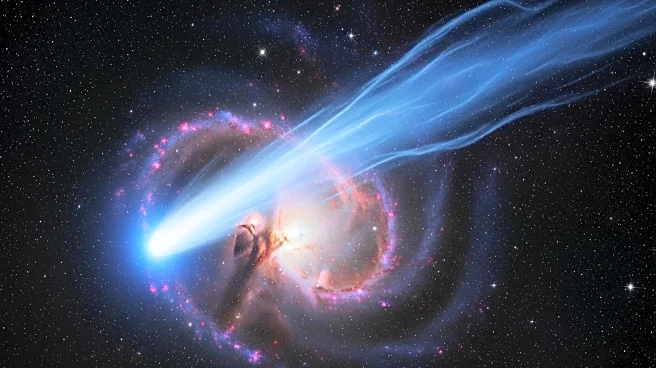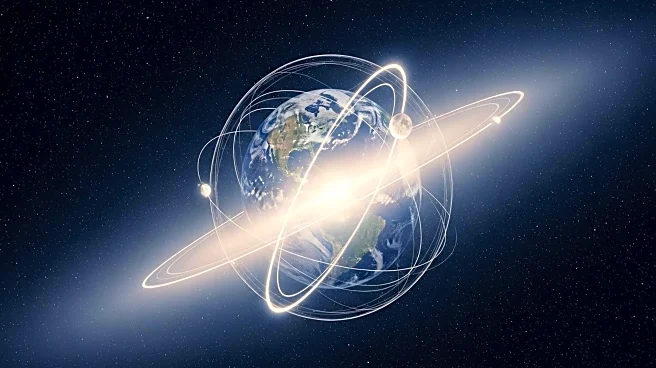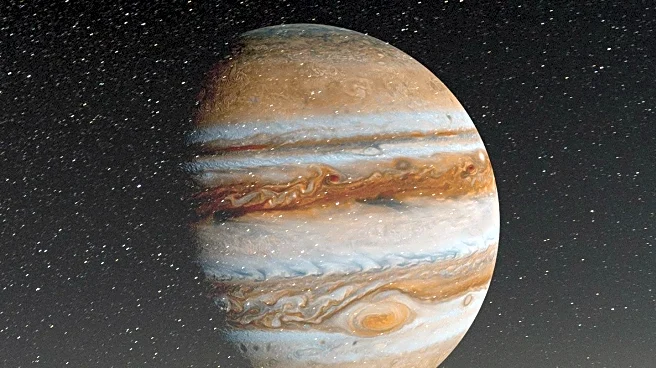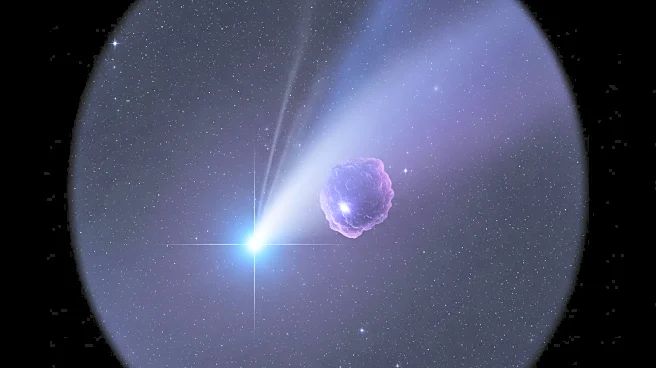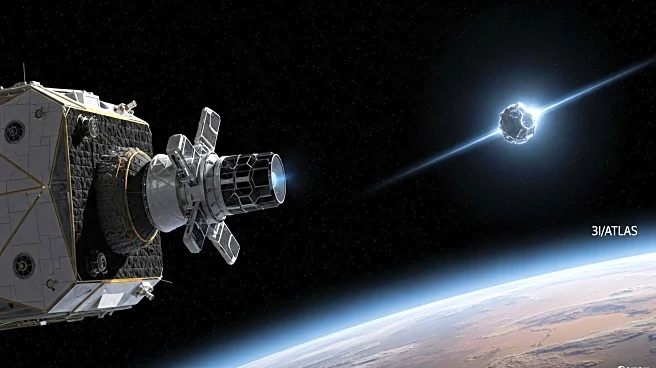What's Happening?
Astronomers have identified a quasi-moon, named 2025 PN7, which has been orbiting near Earth for approximately 60 years. This near-Earth asteroid orbits the sun in a path similar to Earth's, completing its orbit in one year. The discovery was made using the Pan-STARRS observatory in Hawaii. The quasi-moon's small size and faintness have made it difficult to detect until now. It is believed to be part of a group of asteroids with Earth-like orbits, known as Arjuna asteroids.
Why It's Important?
The discovery of 2025 PN7 adds to our understanding of near-Earth objects and their potential origins. Studying such quasi-moons can provide insights into the dynamics of our solar system and the processes that govern asteroid orbits. These objects are of interest for planetary defense and exploration, as they could offer opportunities for future space missions. Understanding their composition and behavior can also help assess any potential impact risks they might pose to Earth.
What's Next?
2025 PN7 is expected to remain in its current orbit for another 60 years before shifting due to the sun's gravitational pull. Further observations and studies are needed to determine its exact size and composition. The quasi-moon's discovery may prompt additional research into similar objects, potentially leading to new missions aimed at exploring these celestial bodies.

